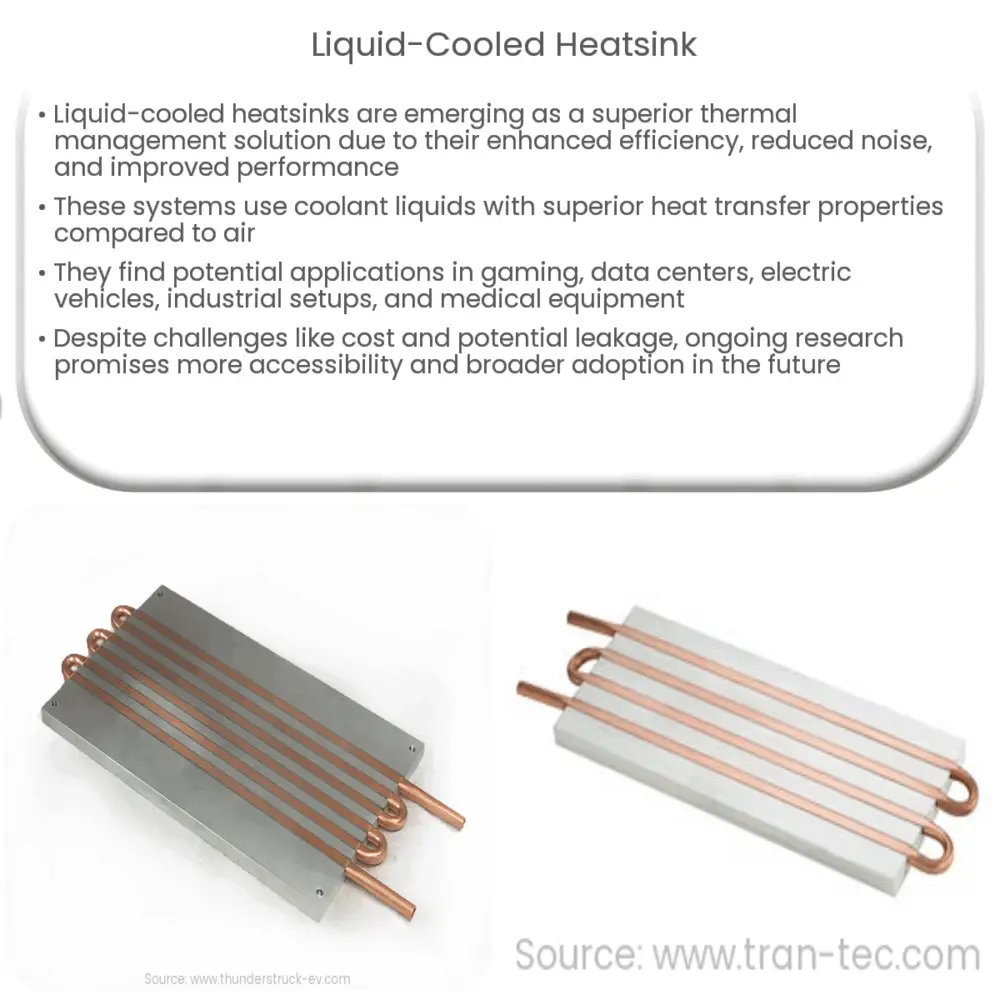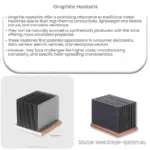Liquid-cooled heatsinks efficiently manage heat in high-performance systems, offering enhanced performance, reduced noise, and compact design.

Liquid-Cooled Heatsink: The Future of Thermal Management
Introduction
As the demand for high-performance computing continues to grow, there has been a corresponding increase in the need for more efficient thermal management solutions. One such innovative technology that has gained traction in recent years is the liquid-cooled heatsink. This advanced system offers a number of benefits over traditional air-cooled solutions, including improved efficiency, reduced noise, and enhanced performance. In this article, we will discuss the workings of a liquid-cooled heatsink, its advantages, and potential applications in various industries.
How Liquid-Cooled Heatsinks Work
Liquid-cooled heatsinks are designed to dissipate heat generated by electronic components, such as processors and graphics cards, more effectively than their air-cooled counterparts. The fundamental principle behind this technology is the utilization of a coolant liquid, which has superior heat transfer properties compared to air. The coolant flows through specially designed channels within the heatsink, absorbing the heat generated by the electronic component. The heated coolant is then circulated through a radiator, which releases the heat into the surrounding environment, allowing the cooled liquid to return to the heatsink and continue the cooling process.
There are two primary types of liquid-cooled heatsinks: closed-loop and open-loop systems. Closed-loop systems are self-contained units that do not require any maintenance or refilling of coolant, making them a popular choice for consumer electronics and gaming computers. Open-loop systems, on the other hand, are more customizable and offer greater cooling capacity, but require more maintenance and a higher level of expertise to set up and manage. Both systems, however, offer superior cooling performance compared to air-cooled heatsinks.
Advantages of Liquid-Cooled Heatsinks
There are several benefits to using a liquid-cooled heatsink over traditional air-cooled solutions:
- Improved Efficiency: The high thermal conductivity of liquids allows for more efficient heat transfer, resulting in lower temperatures for electronic components and increased overall system performance.
- Reduced Noise: Liquid cooling systems often produce less noise than air-cooled systems due to the absence of loud fans. This can be particularly advantageous in settings where noise reduction is a priority, such as offices or home entertainment systems.
- Enhanced Performance: Lower operating temperatures can lead to increased performance and longer lifespans for electronic components, as well as the potential for overclocking in gaming systems.
- Compact Design: Liquid-cooled heatsinks can be more compact than their air-cooled counterparts, allowing for greater flexibility in system design and layout.
Applications of Liquid-Cooled Heatsinks
Liquid-cooled heatsinks have a wide range of potential applications across various industries, some of which include:
- Gaming and Consumer Electronics: High-performance gaming systems and other consumer electronics can greatly benefit from liquid cooling, as it enables better performance, reduced noise, and a more compact design.
- Data Centers: Liquid-cooled heatsinks can help data centers achieve more efficient thermal management, reducing energy consumption and operational costs while maintaining optimal performance.
- Electric Vehicles: The increasing demand for electric vehicles has led to a need for more effective cooling solutions. Liquid-cooled heatsinks can help improve the thermal management of EV components, including batteries and power electronics, thus enhancing performance and extending battery life.
- Industrial Applications: Liquid cooling can be employed in various industrial settings, such as manufacturing and processing plants, where high-performance computing and efficient thermal management are crucial for optimal operation.
- Medical Equipment: Some medical devices, such as MRI machines and CT scanners, require advanced cooling solutions to maintain safe operating temperatures. Liquid-cooled heatsinks can help meet these requirements while minimizing noise and ensuring reliable performance.
Challenges and Future Developments
Despite the numerous advantages of liquid-cooled heatsinks, there are some challenges that need to be addressed for this technology to become more widely adopted:
- Cost: Liquid cooling systems tend to be more expensive than air-cooled solutions, which may deter some consumers and businesses from adopting this technology.
- Maintenance: Open-loop systems, in particular, require regular maintenance and monitoring to ensure proper functioning, which can be time-consuming and may require specialized expertise.
- Leakage: There is a potential risk of coolant leakage in liquid-cooled systems, which could damage electronic components. However, advancements in sealing technology and system design continue to minimize this risk.
Despite these challenges, ongoing research and development efforts are focused on improving the efficiency, reliability, and cost-effectiveness of liquid-cooled heatsinks. With advancements in material science, nanotechnology, and system design, it is expected that liquid cooling solutions will become more accessible and widely adopted across various industries in the near future.
Conclusion
Liquid-cooled heatsinks represent a promising solution for efficient thermal management in high-performance computing systems and other demanding applications. By leveraging the superior heat transfer properties of liquids, these advanced cooling systems offer numerous benefits, including improved efficiency, reduced noise, and enhanced performance. As technology continues to evolve and address the current challenges associated with liquid cooling, it is anticipated that liquid-cooled heatsinks will play an increasingly important role in meeting the thermal management needs of various industries.




